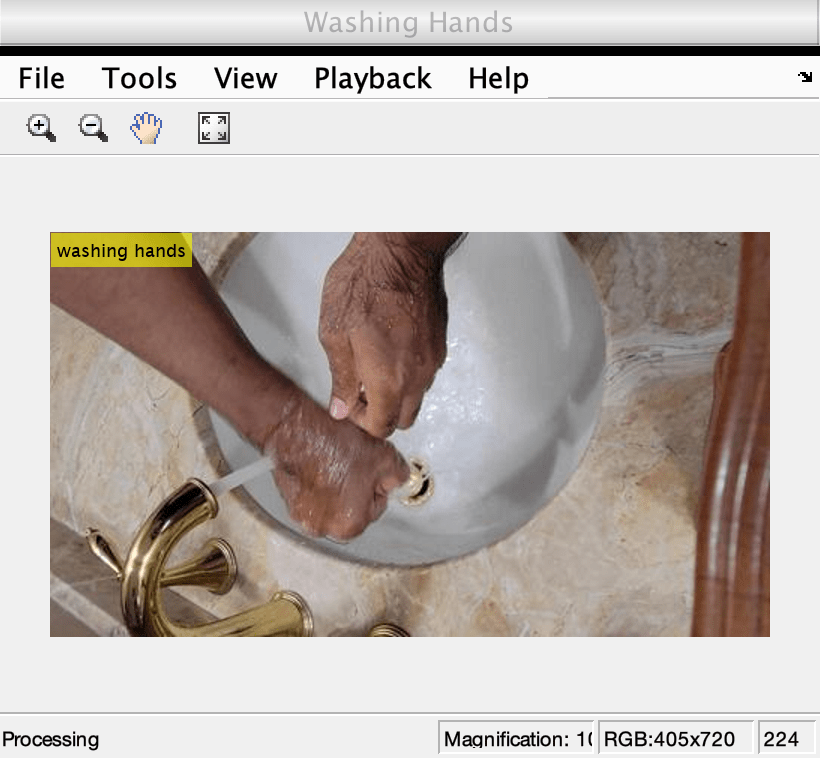slowFastVideoClassifier
SlowFast video classifier. Requires Computer Vision Toolbox Model for SlowFast Video Classification
Since R2021b
Description
The slowFastVideoClassifier object is a SlowFast video classifier
pretrained on the Kinetics-400 data set with a ResNet-50 3-D convolutional neural network
(CNN). You can use the pretrained video classifier to classify 400 human actions such as
running, walking, and shaking hands.
Creation
Syntax
Description
sf = slowFastVideoClassifier
sf = slowFastVideoClassifier("resnet50-3d",classes)classes.
sf = slowFastVideoClassifier(___,Name=Value)sf =
slowFastVideoClassifier("resnet50-3d",classes,InputSize=[256,256,3,32]) sets
the input size of the network. You can specify multiple name-value arguments.
Note
This function requires the Computer Vision Toolbox™ Model for SlowFast Video Classification. You can install Computer Vision Toolbox Model for SlowFast Video Classification from Add-On Explorer. For more information about installing add-ons, see Get and Manage Add-Ons. To use this object, you must have a license for the Deep Learning Toolbox™.
Properties
Object Functions
Examples
Version History
Introduced in R2021b
See Also
Apps
Functions
Objects
dlnetwork(Deep Learning Toolbox) |inflated3dVideoClassifier|r2plus1dVideoClassifier
